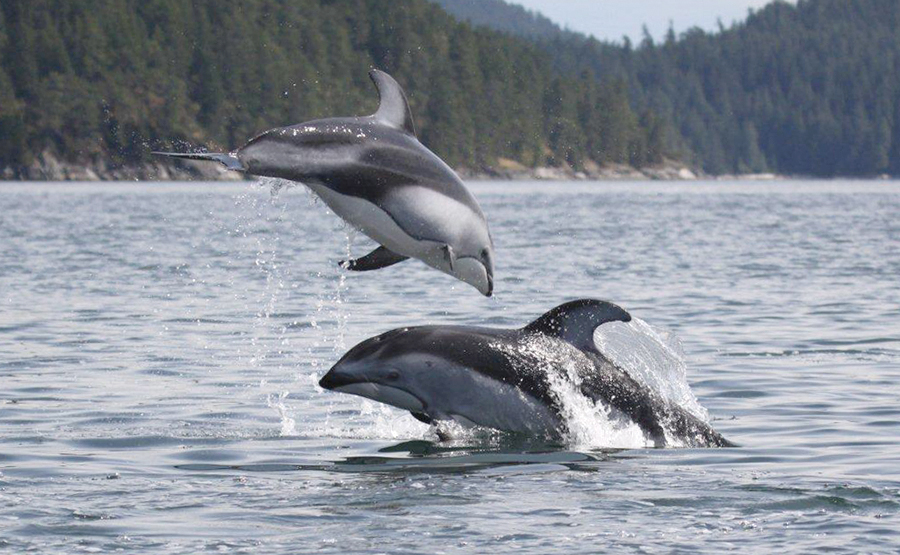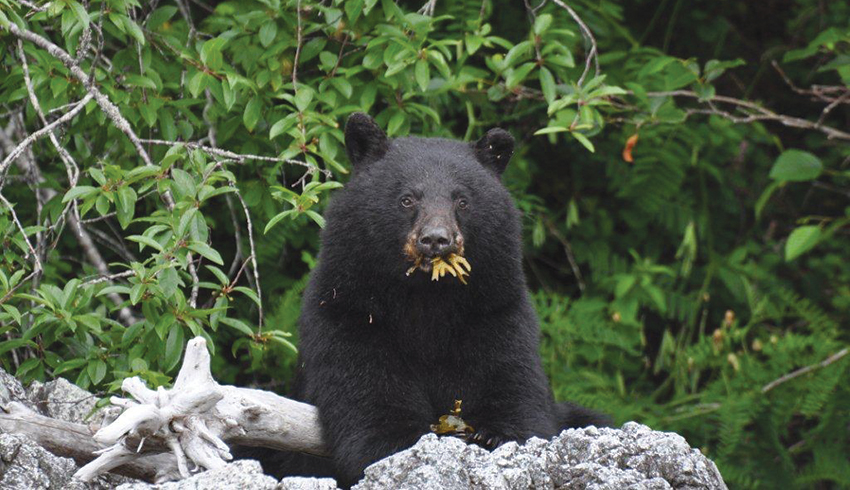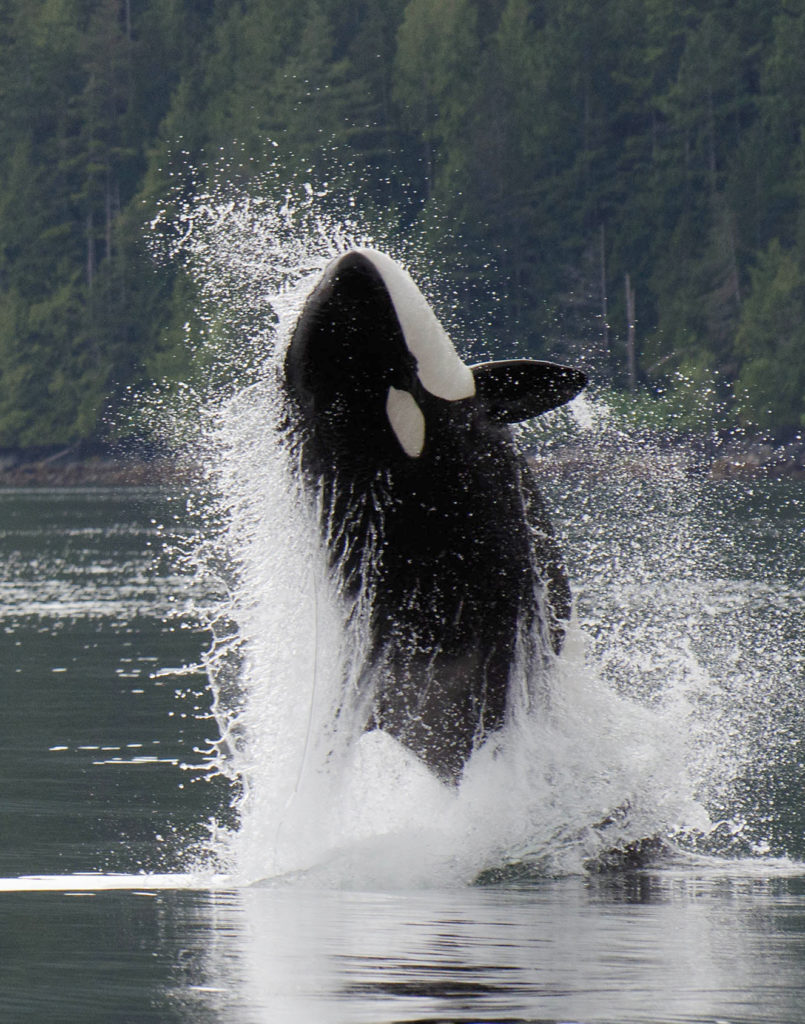There’s a whale of a show in the waters off Campbell River and the east coast of Vancouver Island.
And thousands of tourists flock to this community to catch it. The stars of this show are, of course, the whales, primarily the Orca or killer whales and the humpbacks but a strong supporting cast is provided by dolphins and porpoises.
Whale watching is the quintessential adventure that draws visitors to this region. “It just seems to be the kind of classic experience for people who come out to the West Coast,” says Roger McDonell, co-owner of Stubbs Island Charters out of Telegraph Cove.
For the longest time, Telegraph Cove, a three-hour drive north of Campbell River, was the centre of whale watching in the region but growing populations of whales in the northern Straight of Georgia means that the experience of seeing the majestic animals is available right from the city’s shoreline. “It’s increased tenfold,” says Campbell River Whale Watching owner “Hurricane” Jack Springer.
But the best way to experience it is to hop on board a tour boat. There are three basic methods of taking visitors out to experience whales.
There’s the large motor vessels of 12-18 metres that can take larger groups out at a time, as offered by Stubbs Island Whale Watching. Then there’s the faster, smaller and closer to the water motor-powered zodiac inflatable boats. And then there’s the very-close-to-the-water kayak tours.
Springer’s company utilizes the zodiacs and he’s seen big changes in the whale watching business on the North Island. “I’m kind of the Old Man of the Sea,” Springer says.
When Springer started out in 1996 with Painters Lodge, an iconic salmon fishing lodge in Campbell River, everybody said sticking with sports fishing was the best strategy. People told him there was no repeat business to be had with whale watching. Visitors would only go whale watching once.
But Springer has discovered over the years that people do come back. ”And they come back because people enjoy themselves so much that they want their friends to experience the same thing,” Springer says.
The whale sightings also have changed. It used to be based around Robson Bight, up the east coast of Vancouver Island near Telegraph Cove – Stubbs Island’s turf. But now the whales have expanded their range and the number of whale and species being sighted further south is increasing as is the season for finding them.
“We didn’t think about doing whale watching until July,” Springer says. “Now it’s May/June through to the end of September.”
Orca are finding more food in the form of a booming seal population which explains why there’s an increase in a specific population of whales, those of the transient, or Bigg’s population.
There are two populations of Orca on the West Coast, residents – who feed on salmon – and transients or Bigg’s (named after legendary whale researcher Michael Bigg who discovered the transient population). The Bigg’s (transient) whales are increasing in number in the more southerly areas as they target harbour seals, porpoises and dolphins.
And because those animals don’t migrate, it means the Bigg’s whales can be seen almost any time of the year.
The resident Orca are typically found where the fish are in Johnstone Strait and Blackfish Sound off the northeast side of the Island.
They typically show up around the end of June and Telegraph Cove whale watchers target them, although all tour groups roam up and down the east coast of the Island in search of all populations of whales. Another bonus for whale enthusiasts is the increasing numbers of humpback whale sightings. And these sea mammals can be spectacular to watch as they breach and harvest herring and krill in a very dramatic way.
These are the whales that create bubble “nets” that force herring to school together near the surface and the humpbacks swim up though the nets mouths agape, breaking the surface.
“The nice thing about the humpbacks is they’re very acrobatic,” McDonell says. These majestic animals were hunted out of the Strait of Georgia by the 1960s but they are making a return.
Another whale making a return is the smaller minke whale. But no less entertaining and by no means performing in the shadow of the whale tribes are the dolphins and porpoises.
The species to be seen here are the Dall’s porpoise – which, with their black and white markings, look like mini Orca – harbour porpoises and the gregarious Pacific white sided dolphins. “Pacific white-sided dolphins have been a terrific hit in terms of our visitors,” Springer says. “They steal the show.” They can be seen in groups of 20-100 or more and they swim, jump and “porpoise” their way through the water looking like they’re having the time of their lives.
They will often come up to the boats and will ride the boat’s bow wave. People often find them more thrilling than the whales. “You get the idea that they are happy,” Springer says. “They really show how they feel by their behaviour.” And people reciprocate.
“When we take pictures of our guests when they’re around the dolphins, the smiles are so big and they are genuine,” Springer says. It’s one of the best shows on the coast and Springer recommends people come out and try it.
There’s a variety of experiences to be had – and no trip is the same – from solo, close up in a kayak, to a thrilling speed ride and open-air experience in a zodiac to a larger platform, more protected motor vessel.
All the operators are aware of the need – and the laws – requiring them to keep a safe and respectful distance from the animals. There’s little doubt that whale watching is one of the greatest shows on this part of the Earth.
It’s not just marine life to be seen! Many whale watching tours also offer trips to bear country, catching sight of the king of the local forests.
Photos courtesy: Hurricane Jack and Stubbs Island Whale Watching


